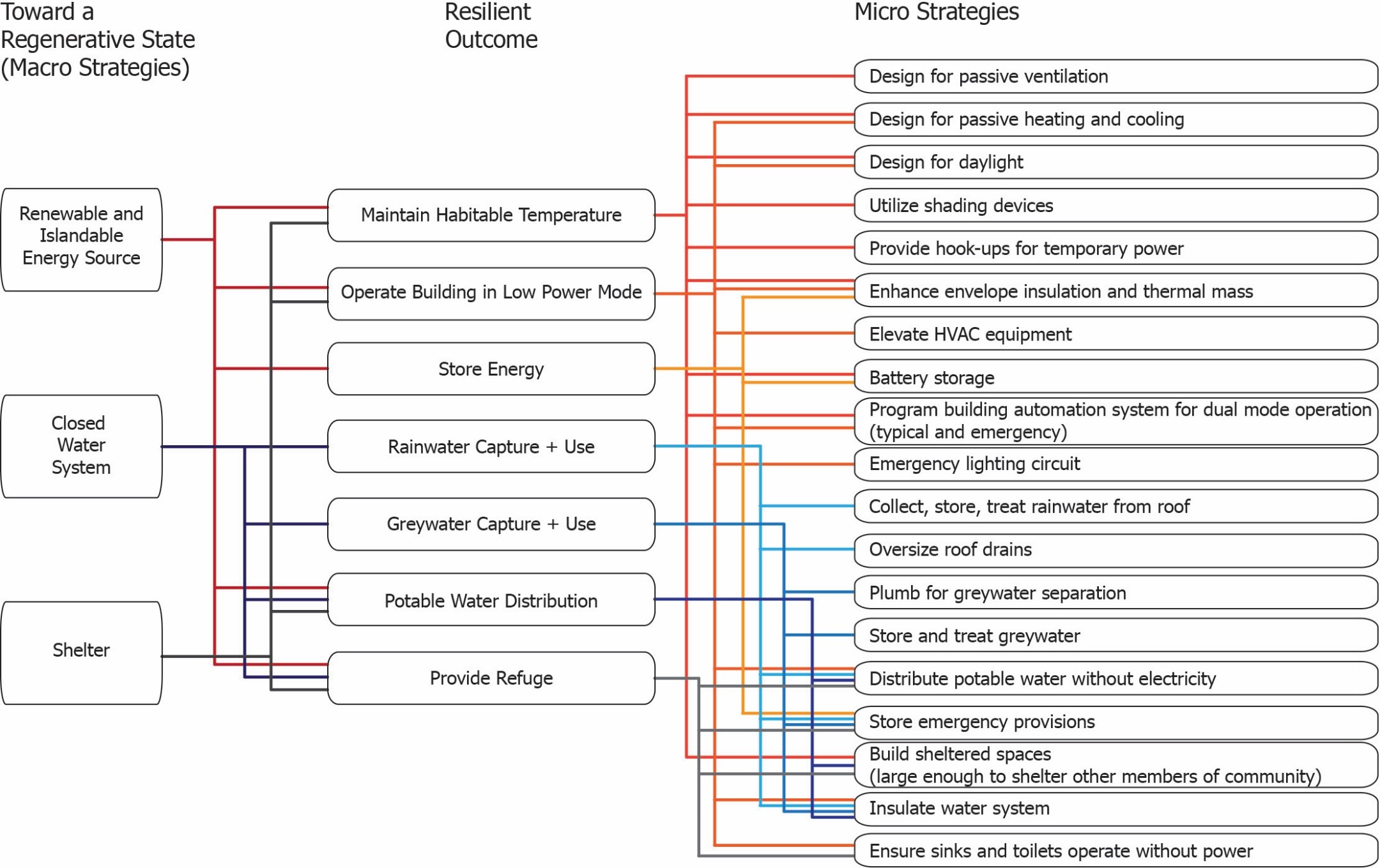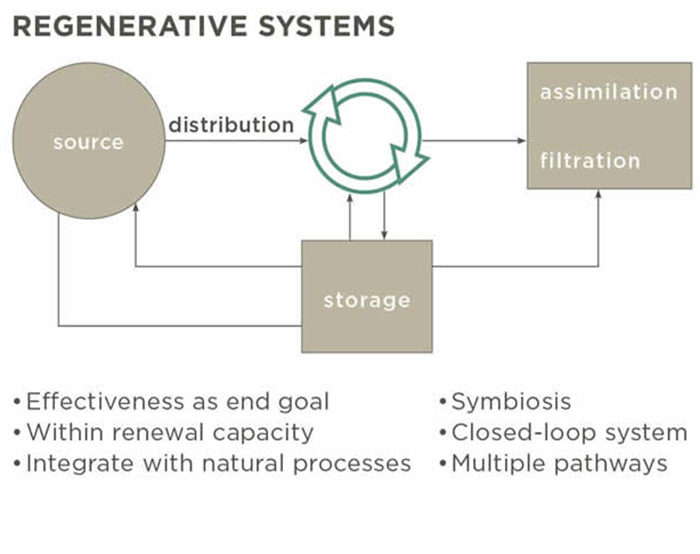
A new direction of research is needed to create communities and buildings that are not only sustainable but also resilient in responding to dynamic situations. The project takes high-performance green buildings and modified them to achieve a "regenerative system state" as defined by John Tilman Lyle in his book Regenerative Design for Sustainable Development.
READ MORE
There is a tension between resilience, efficiency and sustainability. As the first truly sustainable buildings are built, it is questioned how they will perform over time in dynamic conditions. Are highly efficient buildings optimized so much that they cannot adapt to changing climate conditions, operating parameters and the life of occupants?
All of these types of changes and others will occur in the future and design needs to be not only sustainable, but also resilient to perform. The future direction for sustainability research is to incorporate a resilience lens. The project takes high-performance green buildings and modified them to achieve a "regenerative system state" as defined by John Tilman Lyle in his book Regenerative Design for Sustainable Development. The modified projects were then tested against a series of "shocks" to see if the buildings could be not only resilient, but sustainable.

